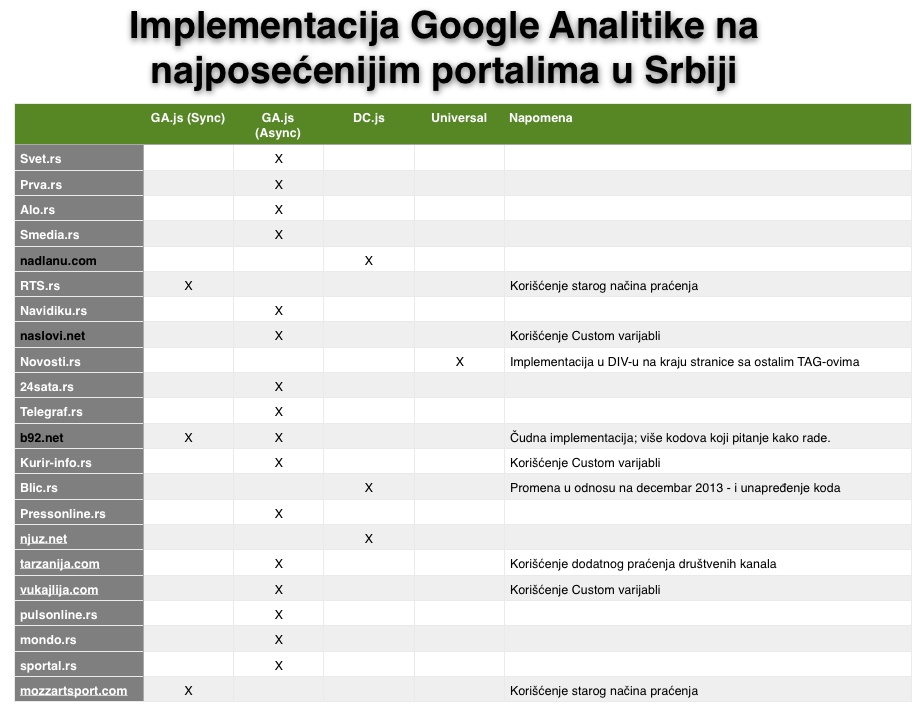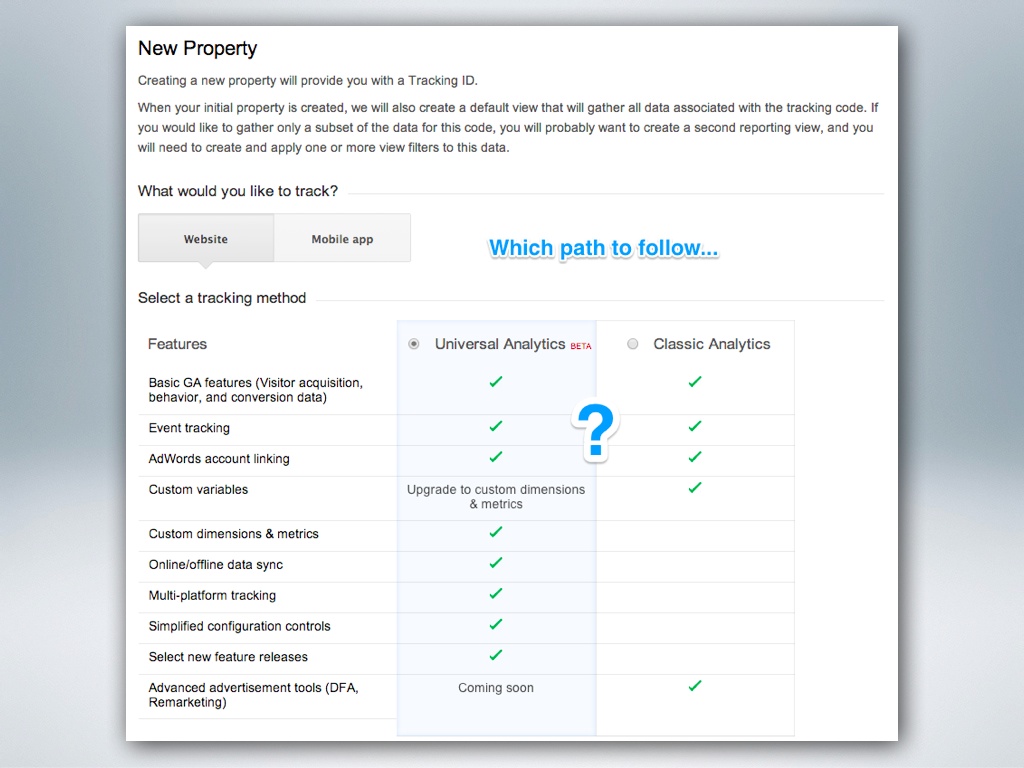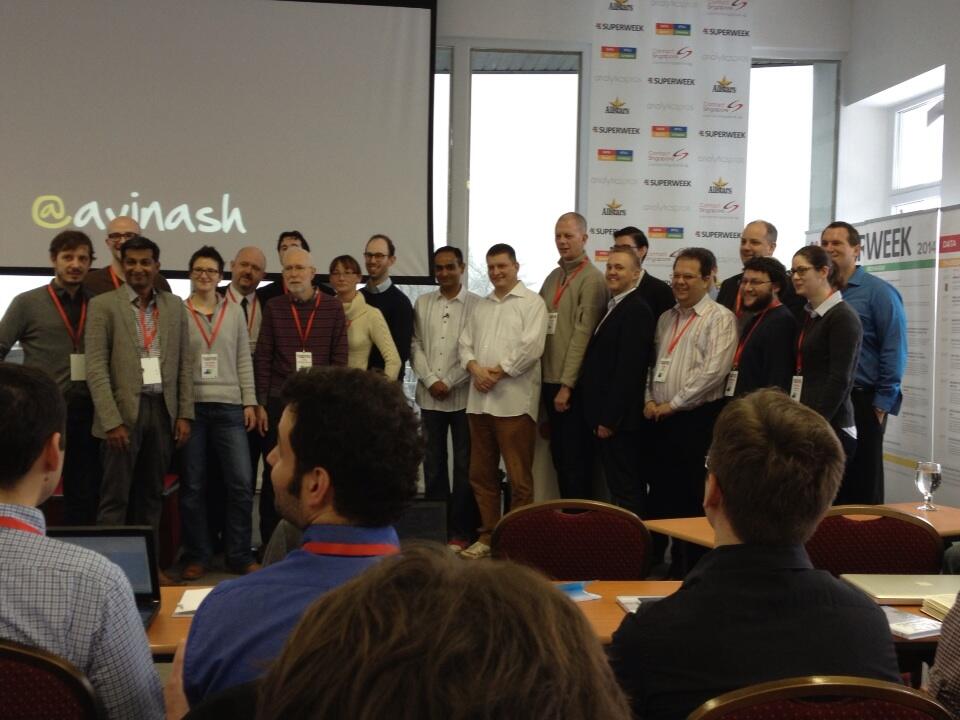U prvom delu smo odgovorili na neka jako važna pitanja, prvenstveno na pitanje šta je to model dodeljivanja. Napravili smo razliku između običnih konverzija i konverzija u Multi Channel Funnel izveštajima. Analizirali smo putanje konverzija i definisali vrste interakcija.
U drugom delu ćemo se baviti pitanjima poput vrsta attribution modela i odgovorićemo na pitanje kako izabrati odgovarajući Attribution model. Videćemo kakve zaključke možemo izvesti iz različitih odnosa vrsta konverzija.
Vrste Attribution modela
Attribution modeli se generalno mogu svrstati u dve kategorije :
Osnovni Attribution model
Osnovni Attribution model definiše distrubuciju interakcija (ili dodirnih tačaka ) na putu do konverzije. Postoji nekoliko osnovnih tipova Attribution modela:
- Last interaction attribution model – Ovaj model dodeljuje 100% kredita poslednjoj interakciji. Google Analytics koristi ovaj model po defaultu.
- First interaction attribution model – Ovaj model dodeljuje 100% kredita prvoj interakciji.
- Linear attribution model – Ovaj model dodeljuje jednak kredit svakoj interakciji na putu do konverzije.
- Time Decay attribution model – Ovaj model dodeljuje više kredita interakcijama koje su vremenski najbliže trenutku ostvarivanja konverzije.
- Position based attribution model – Ovaj model dodeljuje 40% kredita za prvu interakciju, 20% kredita za srednju interakciju i 40% kredita do poslednje interakcije .
- Last non direct click model – Ovaj model dodeljuje sve zasluge za konverzije svim interakcijama do poslednje koja nije direktni klik na putu konverzije.
- Last Adwords Click – Ovaj model dodeljuje sve zasluge za konverzije poslednjem Google AdWords kliku.
Napomena : izbor attribution modela uglavnom zavisi od poslovnog modela klijenta i ciljeva oglašavanja.
Prilagođeni Attribution model
Kao što samo ime kaže ovi modeli su razvijeni od strane ljudi poput nas. Kada izgradite sopstveni attribution model, možete da kreirate sopstvena pravila za dodeljivanje kredita različitim interakcijama na putu do konverzije. Ova pravila su poznata pod imenom “custom credit rules” u Google analitici.
Kako da napravite svoj Attribution model u Google Analitici
Ako imate pristup Google Analitici, pratite sledeće korake kako biste kreirali sopstveni Attribution model.
1. Idite na Model Comparison Tool (ispod Conversions > Attribution na vašem Google Analytics nalogu)
2. Iz padajućeg menija ‘select model’ izaberite ‘create new custom model’.
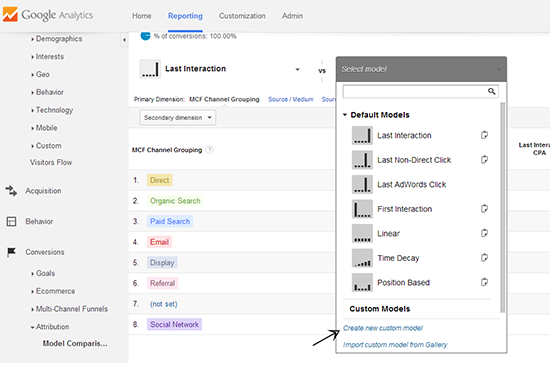
3. Imenujte svoj model i izaberite osnovni model (linear, time decay, position based). Podesite kredite za konverzije, odredite lookback window. Ova pravila definišu kako treba da se kredit svake interakcije distribuira na putu do konverzije. Svako pravilo se zasniva na jednom ili više uslova.
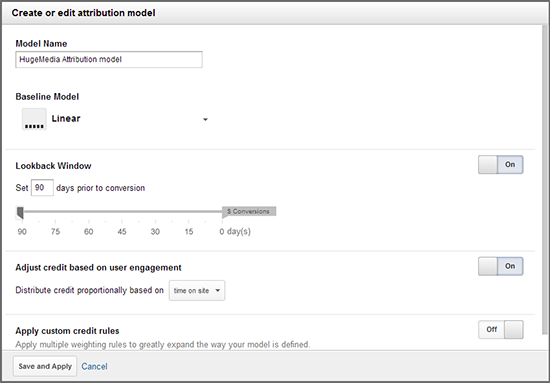
Napomena: Model Comparison tool vam omogućava da kreirate i primenite prilagođene attribution modele. Takođe vam omogućava da uporedite do tri modela istovremeno.
Kako da izaberete Attribution model
Attribution model birate na osnovu poslovnog modela i reklamnih ciljeva vaših klijenata. Attribution model koji izaberete ima veliki uticaj na obim i vrednosti konverzije. Tako oni u velikoj meri utiču na vrednost vaših marketinških kanala. I obim konverzija i vrednost konverzija mogu varirati od jednog do drugog Attribution modela.
Na primer, ako izaberete ‘First interaction attribution model’ onda se svim kanalima marketinga koji iniciraju konverzije pripisuje visoka vrednost konverzije. Ako izaberete ‘Last interaction attribution model’ onda će svim kanalima marketinga na kojima su završene konverzije biti pripisane konverzije sa visokom vrednošću.
Slede neka opšta pravila koja možete primeniti dok odlučujete koji Attribution model treba da izaberete:
- Ako ste novi igrač u vašoj niši onda vam treba veća svest o brendu nego vašim direktnim konkurentima. Posledično, vaši ciljevi oglašavanja će biti više orijentisani na građenje brenda. Dakle, potrebno je da dodelite veći prioritet interakcijama koje iniciraju proces do konverzije. Iz tog razloga, First interaction attribution model je pogodniji za vas.
- Ako imate poslovni model gde je podjednako važna svaka interakcija na putu do konverzije onda je Linear attribution model je prikladan za vas. Na primer, ako pokrenete uslugu podrške klijentima onda je svaka interakcija sa klijentima jednako važna za vas. U tom slučaju možete da koristite linearni model interakcije.
- Ako prodajete proizvode kao što su FMCG (Fast Moving Consumer Goods) koji podrazumevaju najmanji nivo razmatranja od strane kupca, onda je Last interaction attribution model prikladan za vas, jer ne morate da dodelite više značaja prvim i srednjim interakcijama u vašem putu do konverzije.
- Ako imate poslovni model ili ciljeve oglašavanja koji vrednuju prve i poslednje interakcije više od srednjih onda je Position based attribution model pogodan za vas.
- Ako želite da razumete motive kupovine vaših klijenata tokom promotivne kampanje onda biste želeli da dodelite više značaja interakcijama koje se javljaju u najkraćem vremenu konverzije, jer su više relevantne nego interakcije koje su se dogodile pre nekoliko dana. Posledično, Time Decay attribution model je više prikladan za vas.
- Direktan saobraćaj ne predstavlja izvor saobraćaja niti marketinški kanal. Tako da, direktnom saobracaju ne bi trebalo dodeliti značaj na putu do konverzija. Posledično, treba da koristite Last non direct click model koji daje sav značaj konverzijama do poslednjeg indirektnog klika na putu do konverzije.
- Koristite poslednji AdWords click model, ako želite da date Google AdWords-u veći prioritet za konverziju.
Vrednosti konverzije
U multi channel funnel izveštajima postoje 3 vrste konverzija:
- Assisted Conversion Value
- Last Interaction Conversion Value
- First Click conversion value
Assisted Conversion Value je ukupna vrednost ostvarena pomoću asistiranih konverzija . Što je veća vrednost ovih konverzija to je važniji marketinški kanal u asistiranju na putu ostvarivanja konverzije.
Last Interaction Conversion Value je ukupna vrednost povezana sa poslednjom interakcijom pre samog ostvarivanja konverzije. Što je veća vrednost ovih konverzija to je važniji marketinški kanal pri samom završetku proseca ostvarivanja konverzije.
First Click conversion value je ukupna vrednost povezana sa prvim klikom u prosecu ostvarivanja konverzije. Što je veća vrednost ovih konverzija to je važniji marketinški kanal u pokretanju procesa konverzija.
Kako se Assisted / Last Interaction Conversion izračunava i kakve zaključke možete iz toga izvesti?
Ovaj odnos se izračunava kao :
= Broj asistiranih konverzija / Broj Last Interaction konverzija
- Ako je vrednost ovog pokazatelja blizu nule onda to znači da marketiniški kanal najviše doprinosi na samom kraju puta do konverzije, pre svega u završetku konverzije.
- Ako je vrednost ovog pokazatelja blizu 1 onda to znači da marketiniški kanal jednako doprinosi u oba slučaja – pri asistiranja i pri završetku konverzija.
- Ako je vrednost ovog pokazatelja više od 1 onda to znači da marketiniški kanal pre svega doprinosi pri asistiranju konverzija.
Kako se First / Last Interaction Conversion izračunava i kakve zaključke možete iz toga izvesti?
Ovaj odnos se izračunava kao :
= Broj asistiranih konverzija / Broj Last Interaction konverzija
- Ako je vrednost ovog pokazatelja blizu nule onda to znači da marketinški kanal najviše doprinosi na samom kraju puta do konverzije, pre svega u završetku konverzije.
- Ako je vrednost ovog pokazatelja blizu 1 onda to znači da marketiniški kanal jednako doprinosi u oba slučaja – pri pokretanju i pri završetaku konverzija.
- Ako je vrednost ovog pokazatelja više od 1 onda to znači da marketiniški kanal pre svega doprinosi pri pokretanju konverzija.
Ovim dolazimo do kraja priče o Attribution modelu. U nekim od narednih postova bavićemo se temama kao što su Campaing Source Attribution, Cost Data import i šta oni predstavljaju. Videćemo na konkretnom primeru kako upotreba različitih marketinških kanala doprinosi većoj vrednosti konverzija i kako pravilna analiza konverzija pomoću Multi Chanel Funnel izveštaja daje pravu sliku o povraćaju uloženih sredstava kroz različite marketinške kanale.



